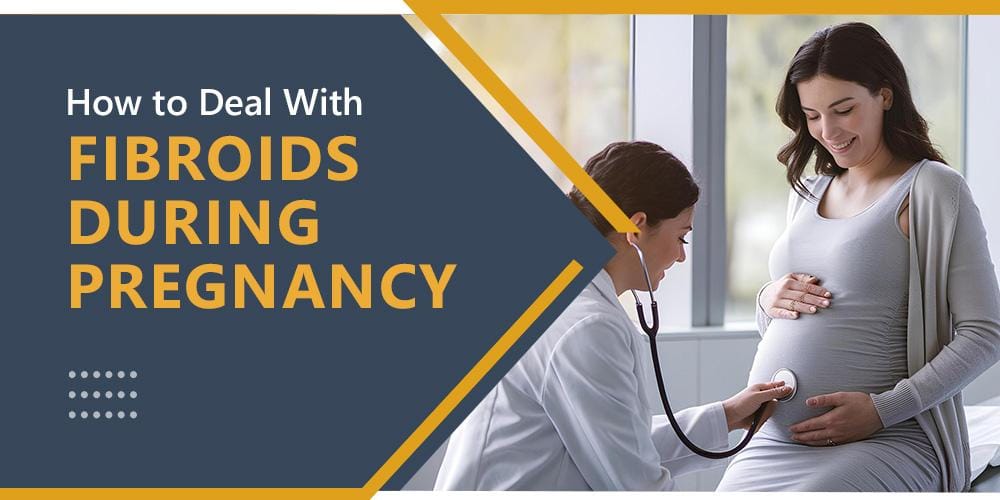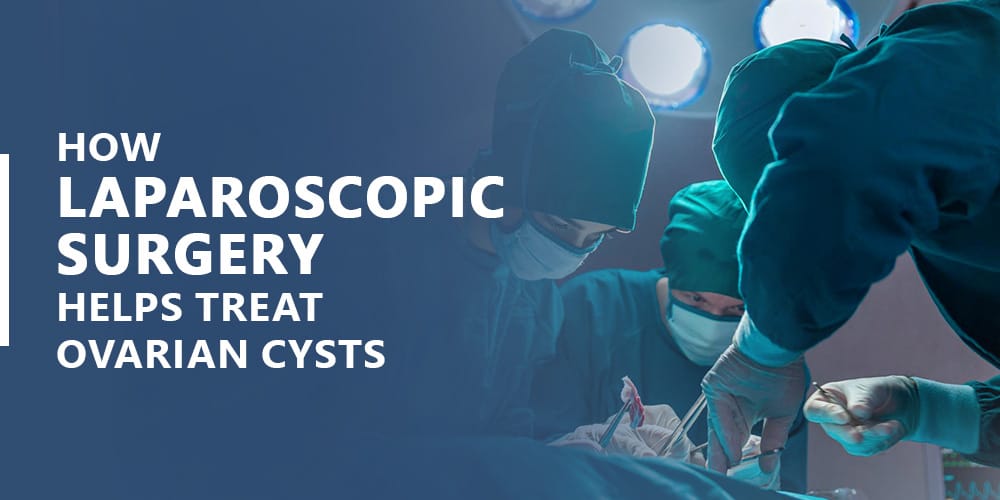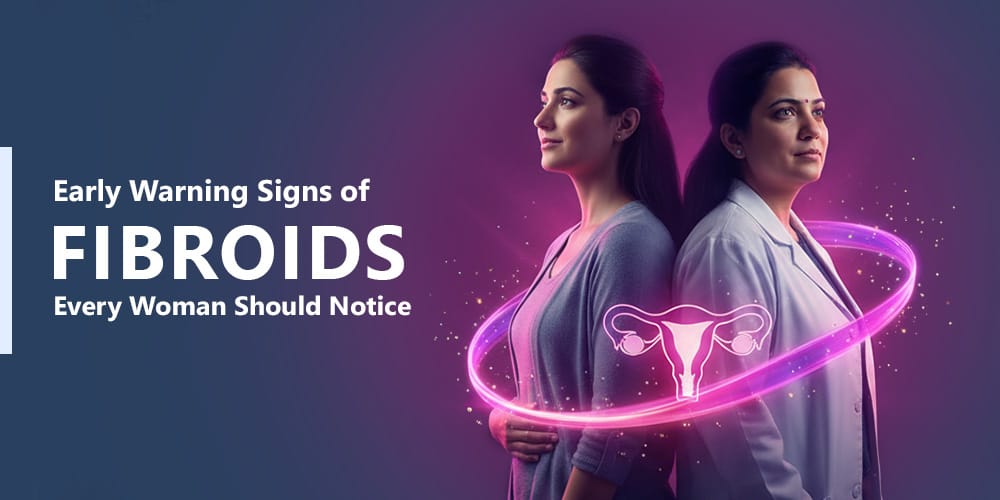Did you know that nearly 25% of Indian women of reproductive age have uterine fibroids?
According to recent studies, fibroids affect 1 in 4 women during their childbearing years. If you’re dealing with fibroids during pregnancy, understanding your options can help you make informed decisions for both you and your baby.
What to know about uterine fibroids?
Uterine fibroids are common in Indian women and can happen even during pregnancy. These are growth spurts, usually benign, and can vary in size, anywhere between a pea-sized growth to the size of a grapefruit. Sometimes, they are asymptomatic, but these are the red flags to watch out for:
- Excessive bleeding (before pregnancy)
- Severe abdominal pain
- Frequent urination
- Constipation or bloating
By location, uterine fibroids can be submucosal (on the uterine cavity), on the walls of the uterus (intramural), or on the outside (subserosal).
Although we cannot point out the reason behind these fibroids, we can mention one probable cause: estrogen. An imbalance of this hormone can lead to the development of these tough, muscular fibrous growths.
Addressing Your Biggest Concerns About Uterine Fibroids and Pregnancy
The most important thing to know is that the vast majority of women with fibroids have perfectly normal pregnancies and deliver healthy babies. However, in some cases, particularly with large or strategically located fibroids, certain complications can arise. Being aware of these helps you and your doctor stay proactive.
- Pain and Discomfort: This is among the most common fibroid symptoms during pregnancy. As your uterus expands and blood flow increases, a large fibroid might outgrow its blood supply, leading to a painful condition called “red degeneration.” This is most common during the second trimester and is usually managed with rest, hydration, and safe pain relief.
- Risk of Miscarriage: While the overall risk is low, submucosal fibroids that grow into the uterine cavity can sometimes interfere with the implantation of the embryo or the growth of the placenta, slightly increasing the risk of first-trimester miscarriage.
- Placental Issues: In rare cases, if a fibroid develops behind the placenta, it can increase the risk of placental abruption, where the placenta separates from the uterine wall before delivery.
Your doctor might raise concerns if:
- Restricted fetal growth
- Unusual bleeding patterns
- Preterm Labour: Large fibroids can sometimes cause the uterus to contract prematurely, leading to a higher chance of preterm labour and delivery.
Studies show women with fibroids have a 16% higher risk of delivering before 37 weeks.
- Regular contractions before 37 weeks
- Pelvic pressure or cramping
- Lower back pain that comes and goes
- Change in vaginal discharge
- Baby’s Position: A large fibroid in the lower part of the uterus can occasionally block the baby’s path, preventing them from getting into the ideal head-down position for birth. This is known as a breech presentation, and it is quite common in fibroid pregnancy.
- Delivery Complications: Fibroids can sometimes obstruct the birth canal or weaken uterine contractions, increasing the likelihood of a Caesarean section (C-section). Research indicates that women with fibroids have a higher rate of C-sections compared to those without.
Managing Fibroids During Pregnancy: Your Options
The good news is that for most women, fibroids pregnancy management is primarily about monitoring and managing symptoms. Uterine fibroids treatment during pregnancy is generally conservative, as surgical removal is typically avoided unless necessary due to the risks it poses to the pregnancy.
Symptom Management
- Pain Relief: For pain caused by red degeneration, your doctor will likely recommend rest, hydration, and over-the-counter pain relievers like paracetamol. Non-steroidal anti-inflammatory drugs (NSAIDs) like ibuprofen are generally avoided in the third trimester due to potential risks to the baby.
- Regular Monitoring: Your doctor will closely monitor the size and number of your fibroids through regular ultrasounds. This helps track any changes and anticipate potential issues.
- Hydration and Rest: Staying well-hydrated and getting enough rest can significantly help manage discomfort.
- Dietary Adjustments: While there’s no specific “fibroid diet,” maintaining a healthy diet rich in fruits, vegetables, and whole grains supports overall well-being during pregnancy.
When is Intervention Considered?
In rare cases, if a fibroid is causing severe, unmanageable pain or significantly jeopardizing the pregnancy, your doctor might consider a myomectomy (surgical removal of the fibroid) during pregnancy.
What to Expect During Delivery with Fibroids
The presence of fibroids doesn’t automatically mean you’ll need a C-section. Many women with fibroids have successful vaginal deliveries. Your doctor will assess the size, location, and number of your fibroids as your due date approaches.
- Vaginal Delivery: If fibroids aren’t blocking the birth canal and aren’t causing other complications, a vaginal delivery is often possible.
- Cesarean Section: A C-section might be recommended if:
- A large fibroid obstructs the birth canal.
- The baby is in a breech position due to fibroids.
- There’s a risk of placental abruption.
- Other obstetric complications arise.
What to know about Post-Pregnancy Uterine Fibroid Treatment?
After delivery, fibroids often shrink, especially if they grew during pregnancy due to hormonal influences. However, they don’t always disappear entirely. If you experienced significant fibroid symptoms during pregnancy or if fibroids continue to cause issues postpartum, your doctor will discuss long-term uterine fibroids treatment options. These could include:
- Medication: Hormonal therapies can help manage fibroid growth and symptoms.
- Myomectomy: Surgical removal of fibroids, preserving the uterus. This is a common best treatment for fibroids for women who wish to retain fertility.
- Uterine Fibroid Embolization (UFE): A minimally invasive procedure that cuts off the blood supply to the fibroids, causing them to shrink.
- Hysterectomy: Removal of the uterus. This is a definitive solution, but it is usually considered only when other treatments haven’t been effective and the woman has completed her family.
The fibroid surgery cost can vary significantly depending on the type of procedure, the hospital, and your insurance coverage.
Frequently Asked Questions About Fibroid Pregnancy
Q1: I have fibroids. Will it be hard for me to get pregnant?
Most women with fibroids conceive without any trouble. However, if fibroids are very large or located inside the uterine cavity (submucosal), they can sometimes interfere with fertility. If you’re facing issues, it’s an important factor for your doctor to evaluate.
Q2: Can I do anything to stop my fibroids from growing during pregnancy?
Unfortunately, there’s no guaranteed way to stop fibroid growth during pregnancy since it’s driven by hormones. However, maintaining a healthy weight, eating a balanced diet rich in fruits and vegetables, and managing stress can contribute to a healthier pregnancy overall.
Q3: Is it normal to have more pain with fibroids during pregnancy?
Yes, some level of discomfort or pain can be a common fibroid symptom during pregnancy, especially in the second and third trimesters. However, you should never ignore severe pain. Always contact your doctor immediately to rule out any serious complications.
Q4: My friend had her fibroids removed during her C-section. Is that an option? Sometimes, if a fibroid is easily accessible, a surgeon might remove it during a C-section. However, this is decided on a case-by-case basis as it can increase the risk of bleeding. It’s a conversation to have with your doctor well before your delivery.






